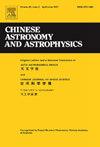Design and Study on Mechanical and Thermal Properties of the Cryostat for High Sensitivity Terahertz Detection Module
Abstract
The High Sensitivity Terahertz Detection Module (HSTDM) is one of the scientific payloads of the China Space Station Survey Telescope, which mainly conducts terahertz astronomical observations. The core of the HSTDM is the NbN superconducting tunnel junction (Superconductor - Insulator - Superconductor (SIS)) mixer, operating at the temperature 10 K, cooled by a space-qualified two-stage pulse tube refrigerator. The cryostat, which can minimize the heat load of the refrigerator, is a key component to realize the 10 K refrigeration environment in space, and it needs to adapt to the mechanical vibration during launch. This paper mainly introduces the structural design, mechanical characteristics simulation analysis and actual measurement, and thermal characteristics simulation analysis of this special cryostat. The fundamental frequency of the cryostat is 189.36 Hz. The mechanical analysis results demonstrate that the maximum stress of the support structures is lower than the yield stress of the materials. The vibration test results show that the cryostat can adapt to mechanical environments. The cryostat has a heat leakage of 1800 mW to the first cold stage and 20.6 mW to the second cold stage, both of which are less than the cooling power of the refrigerator. The thermal analysis results show that the thermal design of the cryostat satisfies the thermal insulation requirements. The research results demonstrate that the cryostat design can meet the space application requirements of the HSTDM.

 求助内容:
求助内容: 应助结果提醒方式:
应助结果提醒方式:


